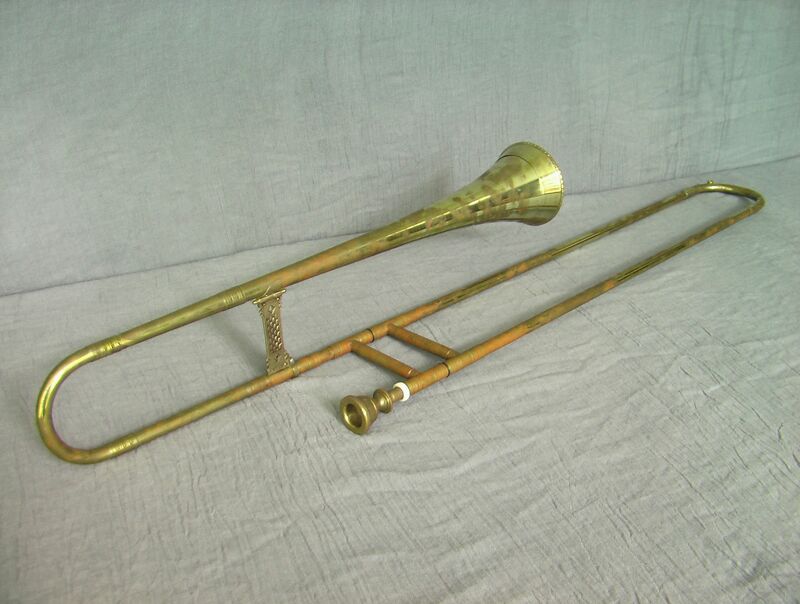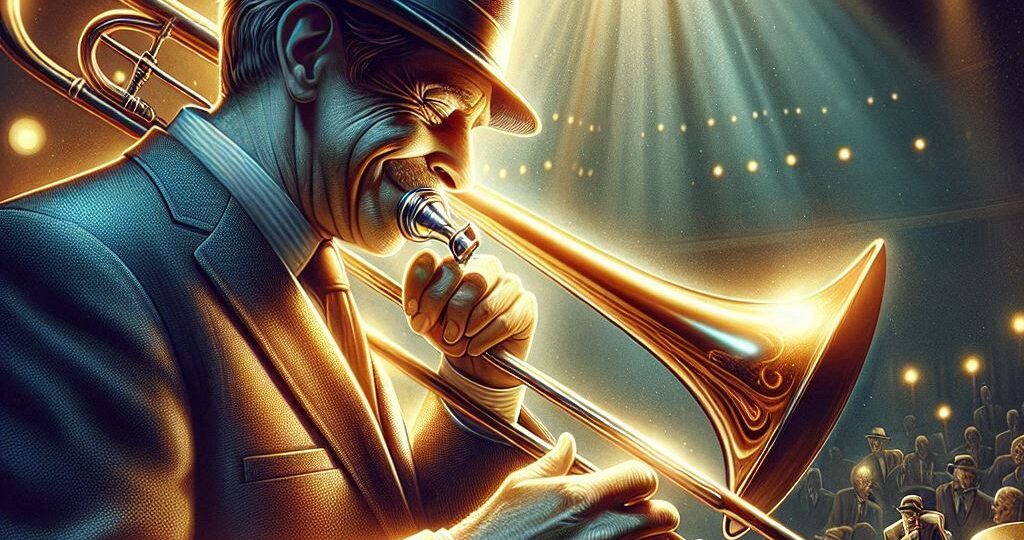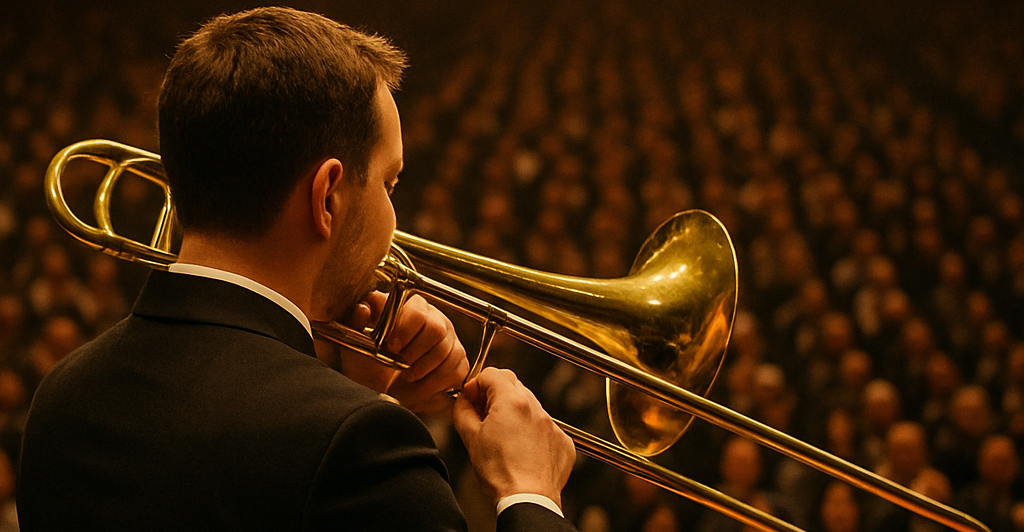The sackbut, with its quirky name, might not be something you hear about every day, but it sure played a star role in the history of trombones. This early brass instrument looked similar to our modern trombone but had some key differences—for one, the bell was a lot smaller, and it had a softer, almost haunting tone. Picture it filling the grand halls of medieval courts and churches; it was the magical sound behind many sacred and ceremonial performances.

Back in the day, the sackbut was all about supporting religious music. Its mellow sound perfectly blended with human voices, making it a favorite in choral settings. It added a touch of finesse and balance to the ensembles, which was super important during those times when everything was about harmonizing rather than overpowering.
Craftsmanship was another fascinating aspect of the sackbut’s story. Every piece was crafted by hand, tailored to match the desire for a specific sound and feel. These instruments were truly one-of-a-kind, each carrying the mark of its maker. Their design reflected the innovation and artistry of the era, focusing on function over flash.
Composers back then were just starting to explore the sackbut’s potential, embedding its sonorous tones into their compositions. It slowly found a niche in works by early geniuses who recognized its unique character. These pioneers were experimenting with form and sound, paving the way for the trombone’s future.
The sackbut might have had a humble start, mainly heard in solemn settings, but it wasn’t a mere step in brass evolution. It was the beginning of an exciting journey that would eventually lead us to the bold and brassy sounds of the modern trombone.
The Transformation into the Trombone
As the music world shifted from the mystical sounds of the sackbut, a transformation was underway. The sackbut started to evolve, both in name and form, eventually morphing into what we know today as the trombone. This metamorphosis didn’t happen overnight. It was a gradual process, reflecting changes in musical tastes and technological advancements.
Initially, it was all about keeping pace with the Renaissance and Baroque periods’ demands. The instrument needed to sound bigger, bolder, and better to fit the evolving landscapes. Artisans responded by altering its construction, crafting larger bells and fine-tuning the slides to enhance range and power. It was no longer just a backdrop instrument; the trombone was stepping into the spotlight in orchestral and solo settings.
A crucial player in this evolution was the growing expertise in metalwork, which enabled builders to experiment like never before. They started creating trombones that could produce a new array of tones, with precision and consistency becoming the new goal. This shift mirrored the broader cultural trends where people craved innovation and perfection in arts and sciences alike.
What’s particularly exciting is seeing how musical pieces from these eras showcase the trombone’s newfound capabilities. Composers, always on the lookout for fresh textures and dynamics, began scoring for trombones more frequently. It was a time when this instrument truly began to shine, contributing to both ensembles and standalone performances significantly.
The trombone’s journey from the sackbut days to its rising presence in Renaissance and Baroque music is a testament to the interplay between cultural growth and technological prowess. It’s a story of adaptation and ambition, resonating with the dynamics of change that continue to shape our musical landscape today.
The Modern Trombone: Technological Advancements and Innovations
The modern trombone has seen some serious upgrades thanks to technological innovations. This isn’t your grandad’s instrument—today’s trombones come with all sorts of enhancements that make them sound amazing, whether you’re in a jazz club or a concert hall. For starters, different kinds of metals like nickel silver are used, which don’t just look snazzy, but also affect the tone and durability.
Another cool development is the complexity of the slide and valve systems. They’ve turned into engineering marvels, allowing players to hit notes with precision and ease. So whether you’re gliding through a smooth legato or kicking into a sharp staccato, modern trombone design has got you covered.
There’s also a whole family of trombones to explore now, from the gutsy bass to the nimble alto and everything in between. Each has its unique character and role, and musicians love the variety and versatility. These options have broadened the trombone’s reach into different musical genres and styles—way more than back in the day’s simple sackbut.
Today’s composers have taken notice, too. They’re crafting pieces that test the limits of the trombone’s dynamic range and expression. The instrument’s grown from its old spiritual roots to a powerhouse of emotion and energy capable of evoking a wide spectrum of musical moods.
Modern trombone advancements showcase how far we’ve come in combining craftsmanship with creativity. It’s an exciting time for both players and audiences, as we continue to explore everything the trombone can offer.
Cultural Significance: The Trombone in Popular and Niche Genres
Trombones have a special way of stealing the show in various music genres, proving they’re not just about classical tunes. Take the jazz world, for instance. Ever since swing and bebop took off, trombones have been right there bringing their signature blend of soul and sophistication. Players like J.J. Johnson and Trombone Shorty not only highlighted its versatility but also pushed its presence into the heart of American jazz.
Beyond jazz, the trombone’s vibe is alive and well in film scores. Soundtracks leverage its powerful swells and subtle nuances to shape scenes and build emotion. Whether a quiet moment or a thrilling action sequence, the trombone helps capture the right mood, making those cinematic experiences even more memorable.
Of course, the classical world hasn’t waved goodbye to trombones. Orchestras still treasure them for their dynamic range and color. Whether in a full symphony or as part of a brass ensemble, the trombone touches hearts with its rich sounds, proving timeless in concert halls worldwide.
But that’s not all. Think ska bands and funk outfits—genres that love the trombone’s punchy, energetic feel. It’s part of the backbone in many modern tracks, adding an element of surprise and character that listeners just can’t resist.
All this shows the trombone’s adaptability and importance in today’s music scene. It’s a vibrant instrument that continues to inspire musicians and connect with audiences across ages and backgrounds.





